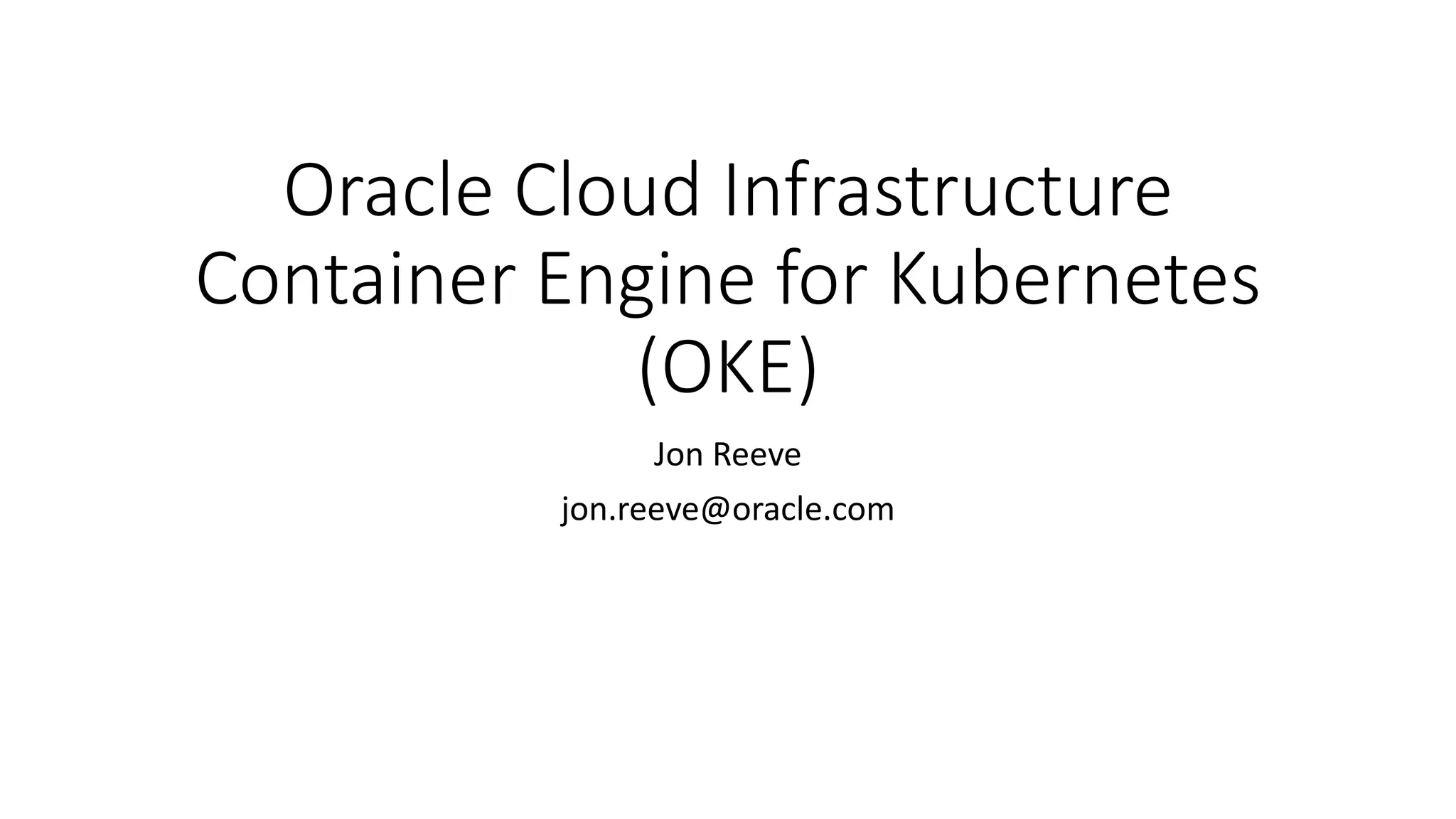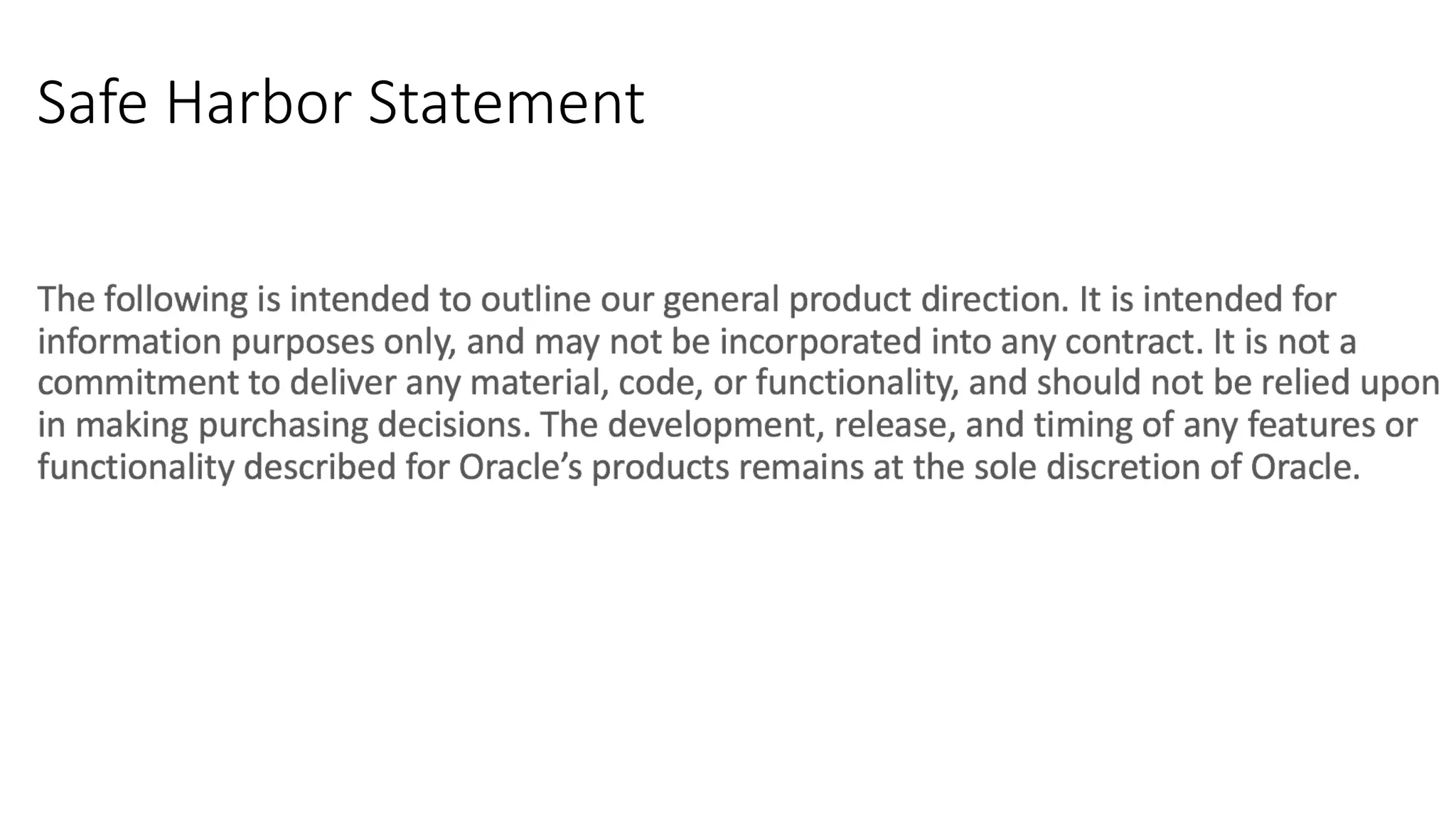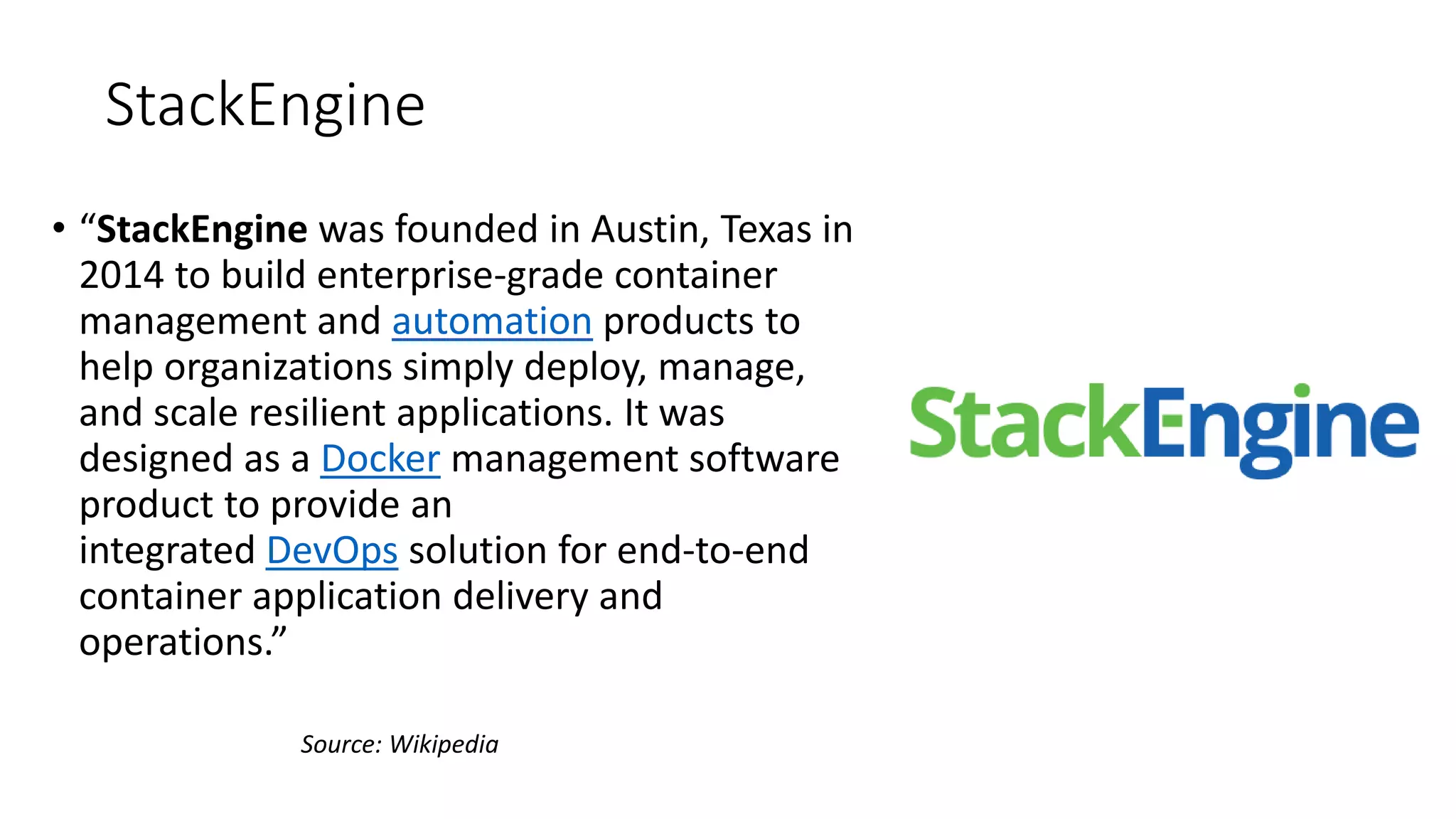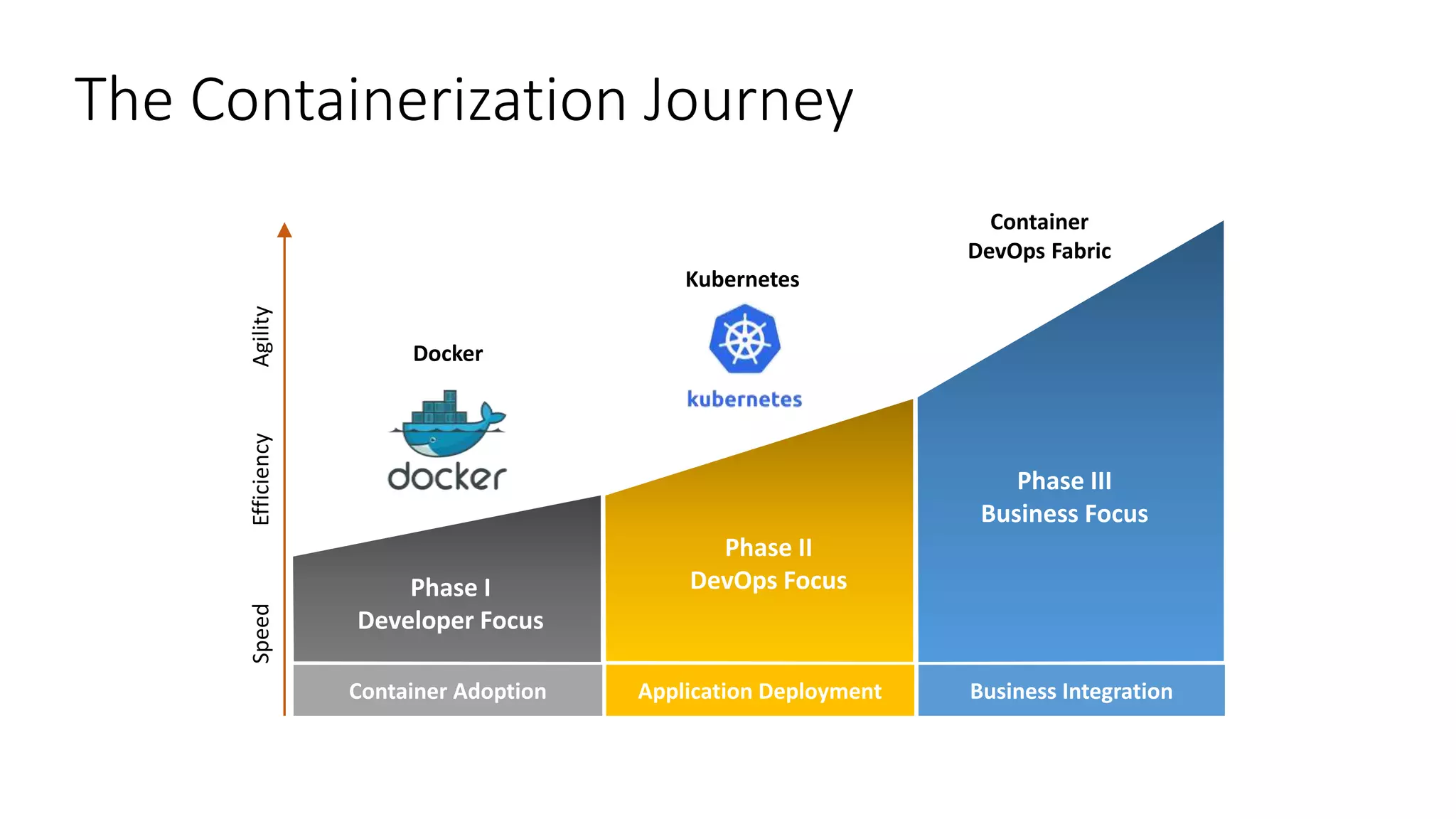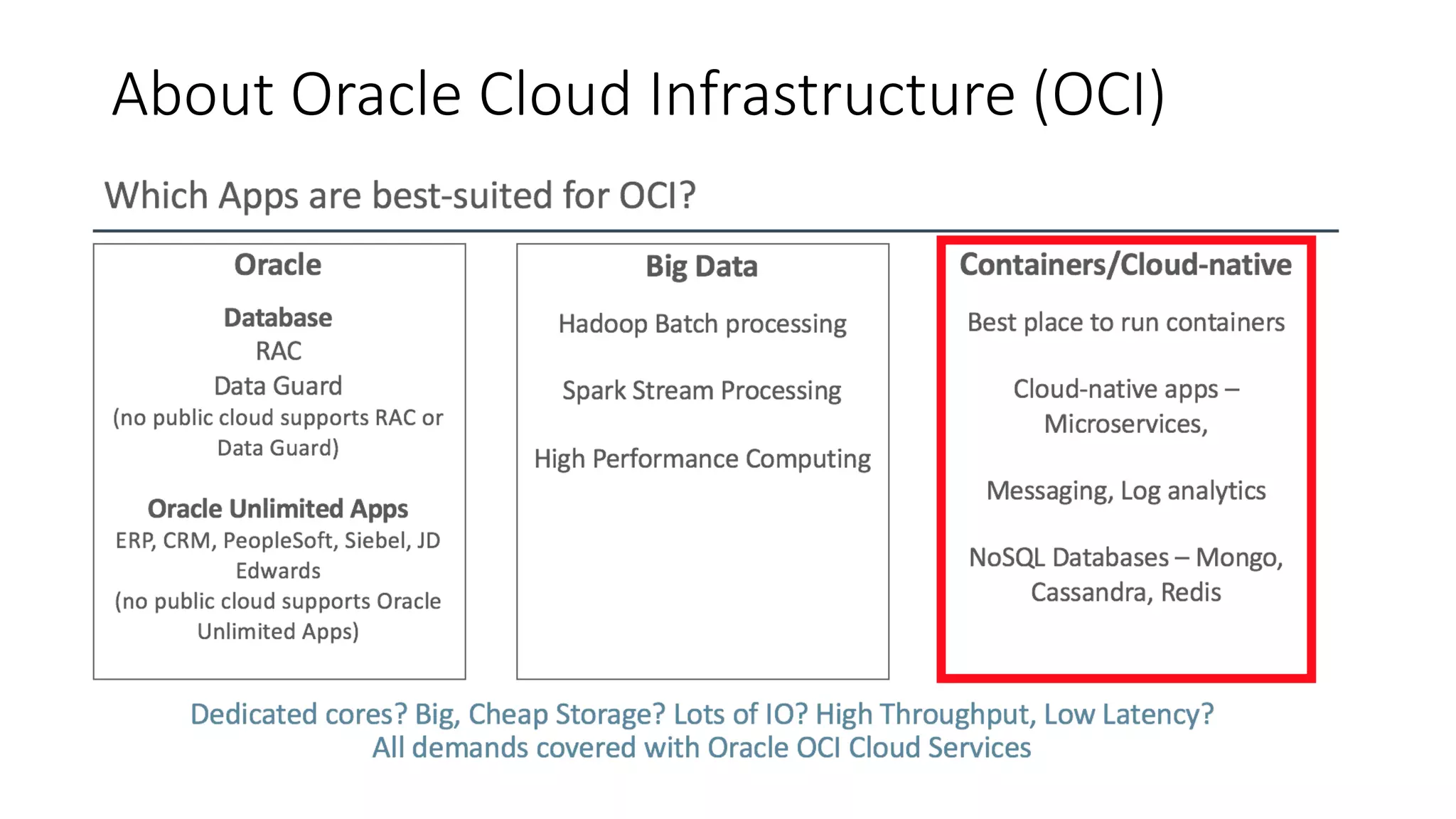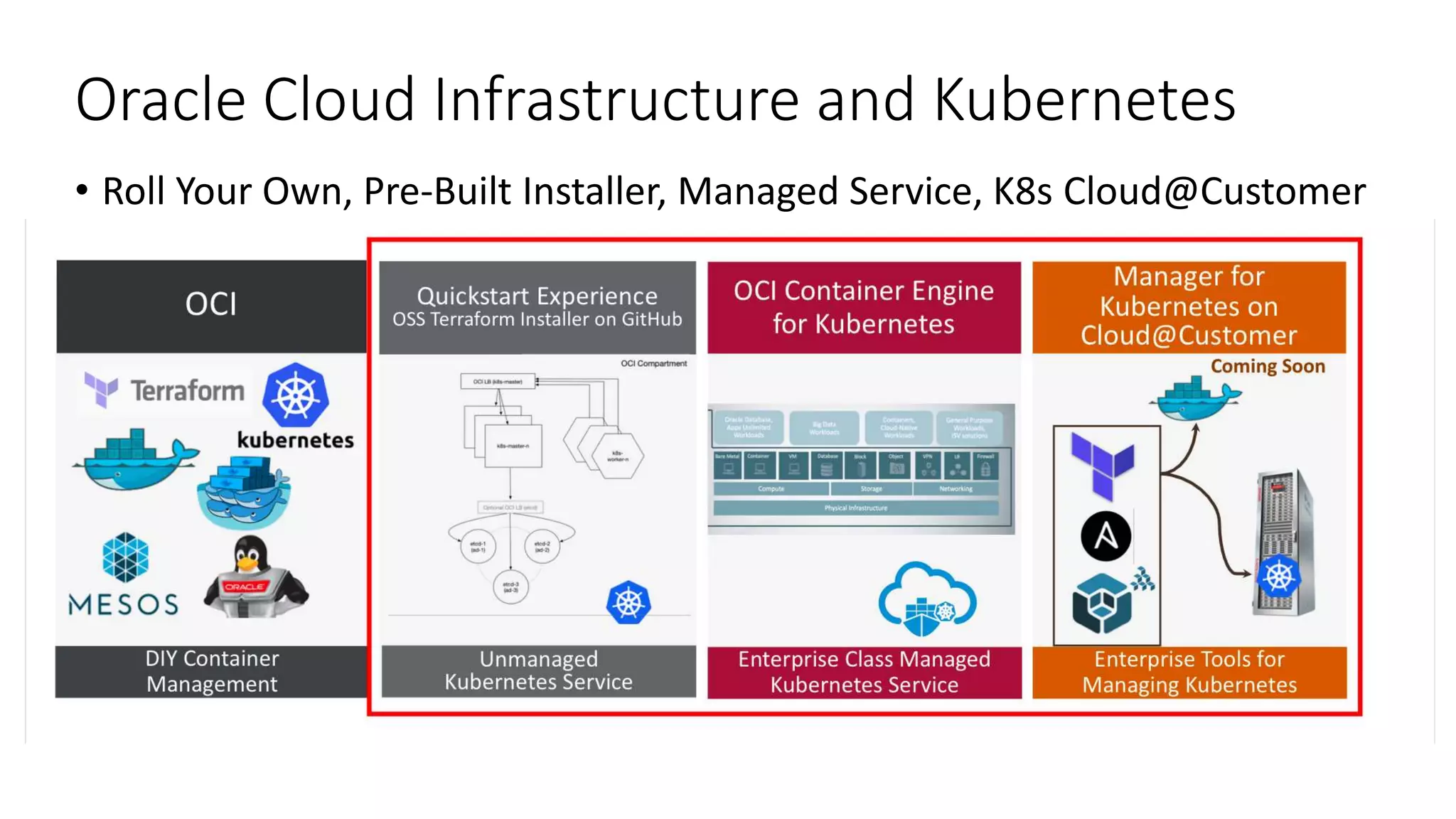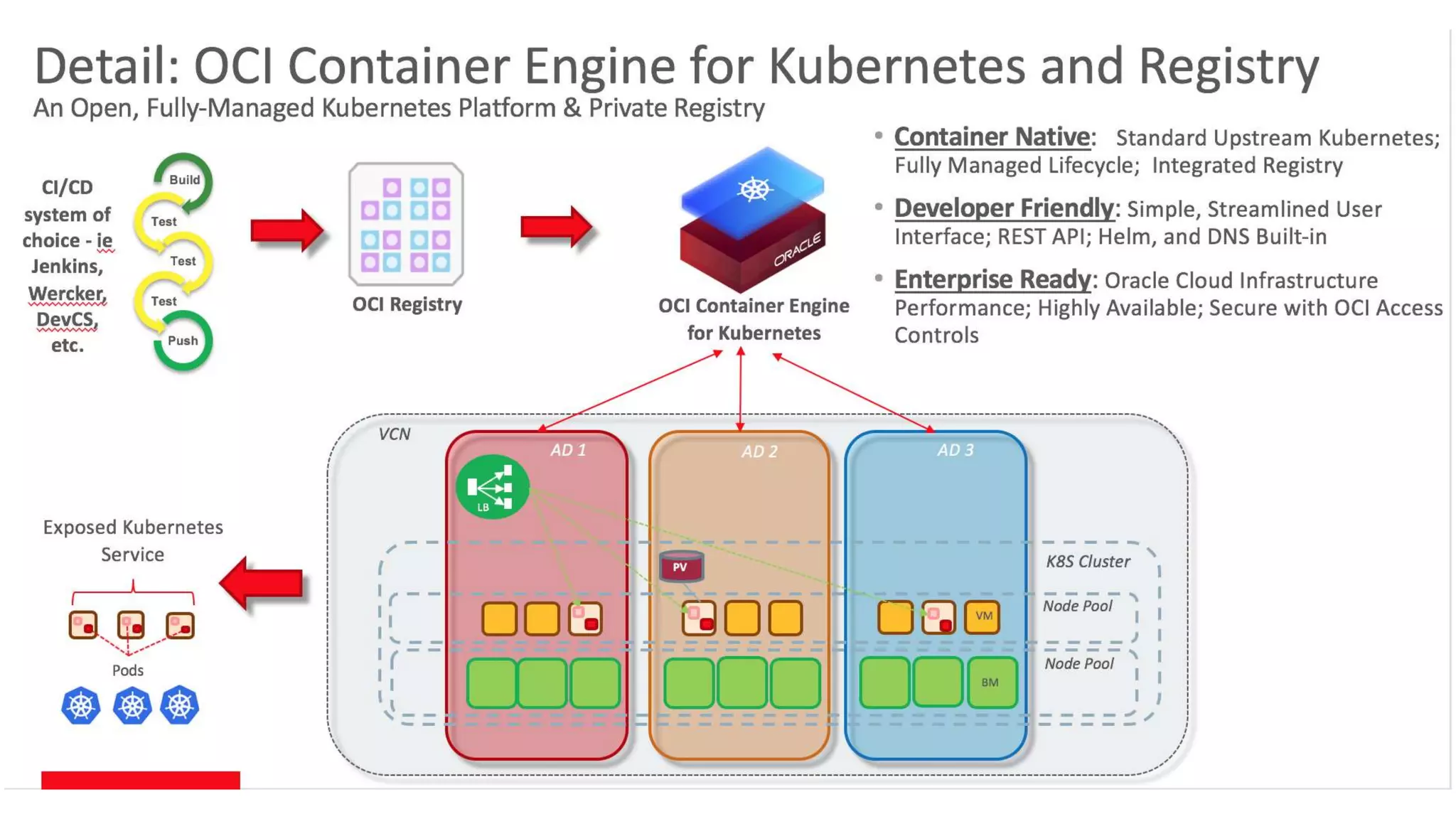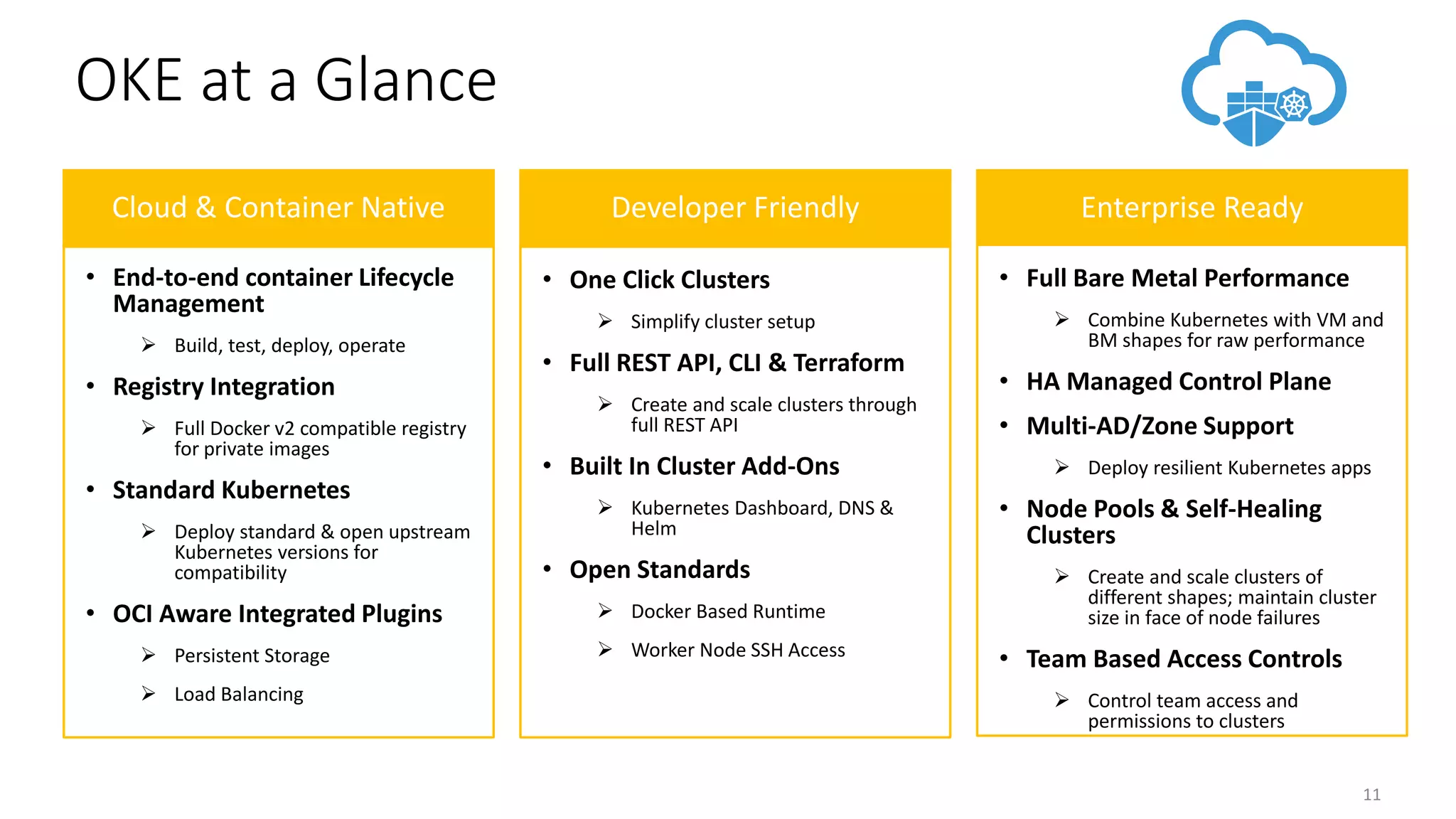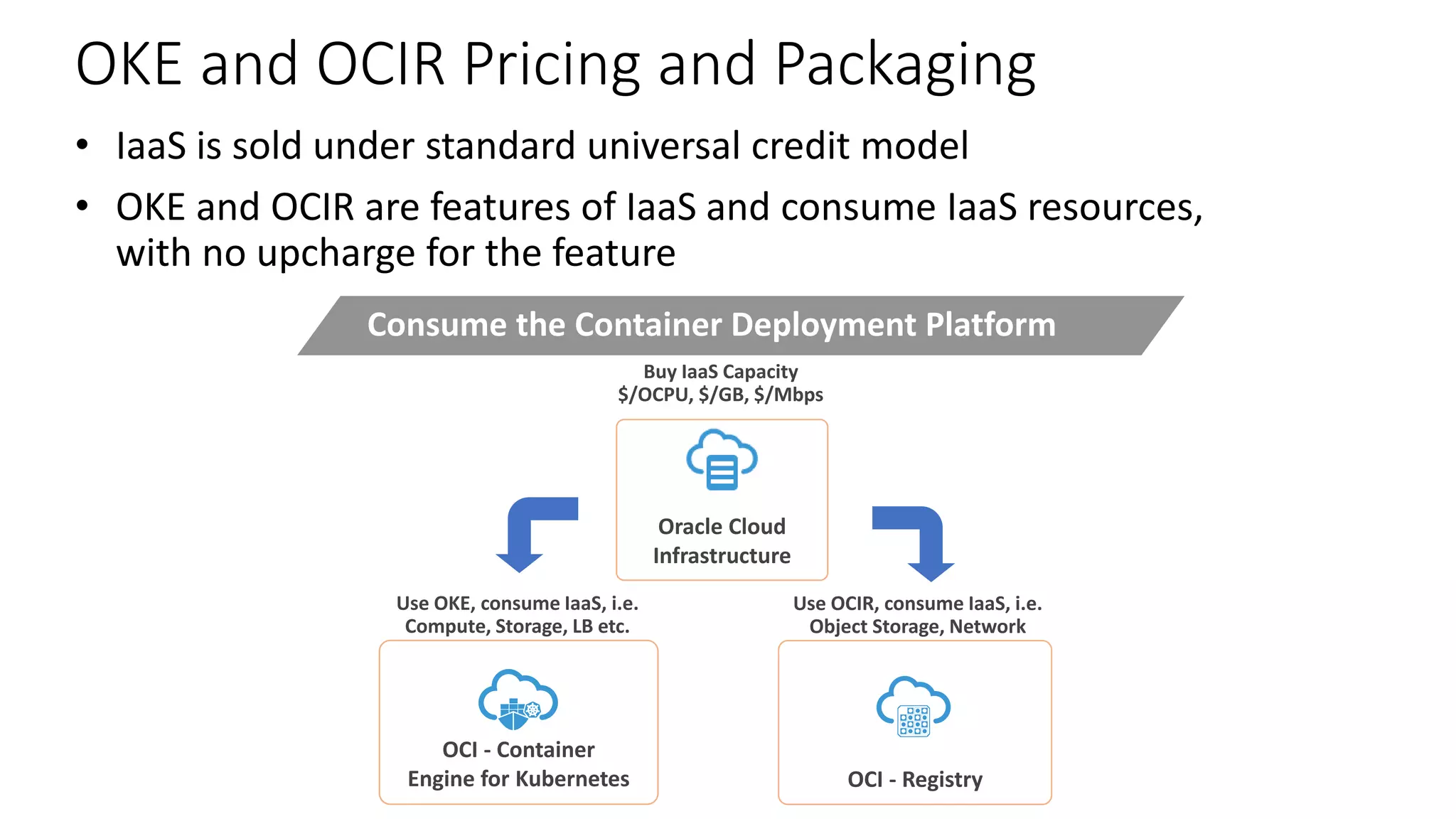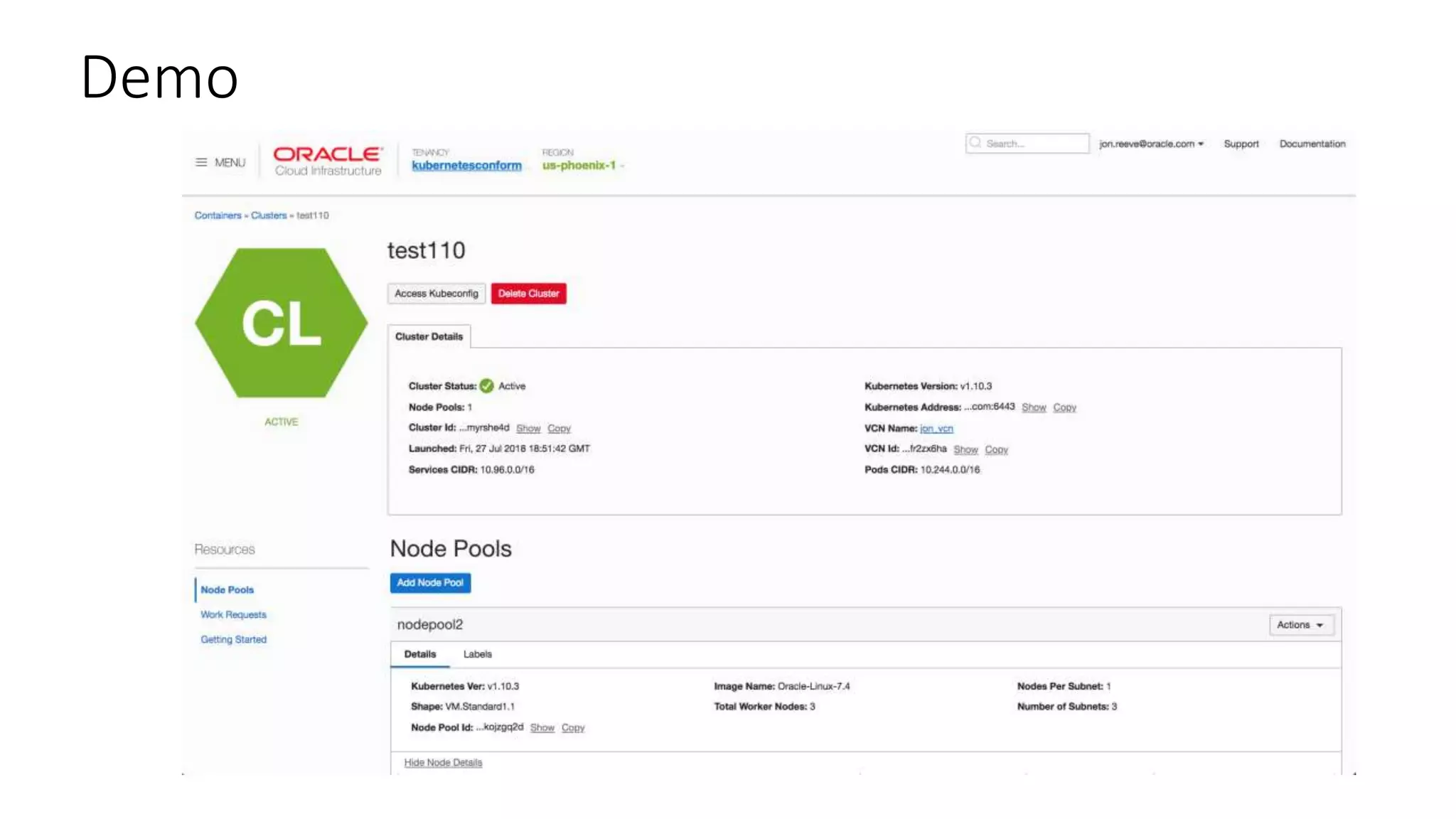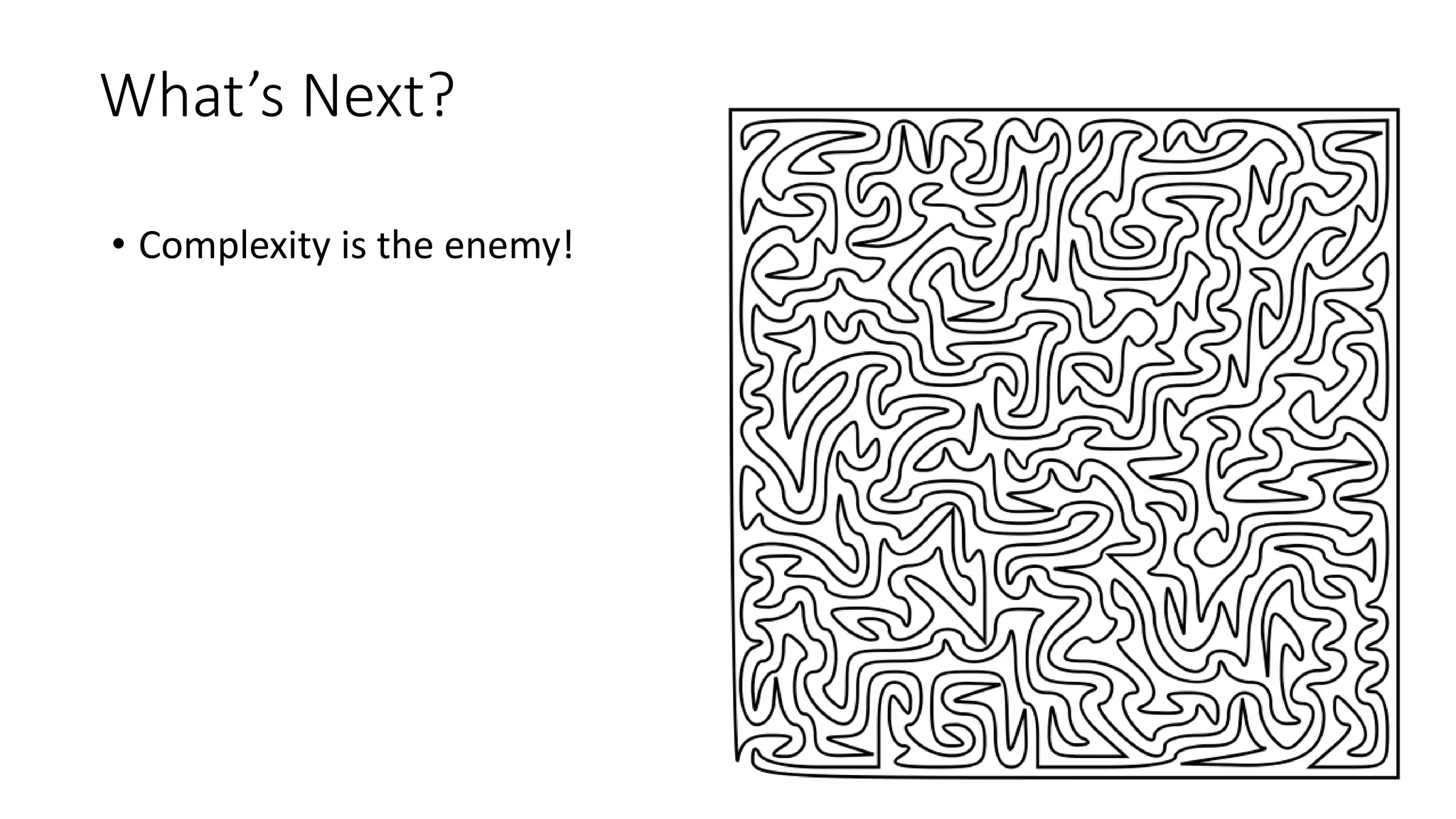This document discusses Oracle Cloud Infrastructure Container Engine for Kubernetes (OKE). It provides background on the speaker Jon Reeve and his experience with containers. It describes Oracle's acquisition of StackEngine, a Docker management company. It outlines the phases of container adoption and positions Docker and Kubernetes as popular tools. It provides an overview of OCI and OKE, highlighting OKE's developer-friendly and enterprise-ready features like one-click clusters, integrated plugins, and team-based access controls. Pricing is discussed where OKE and OCIR consume underlying IaaS resources at no additional cost.
